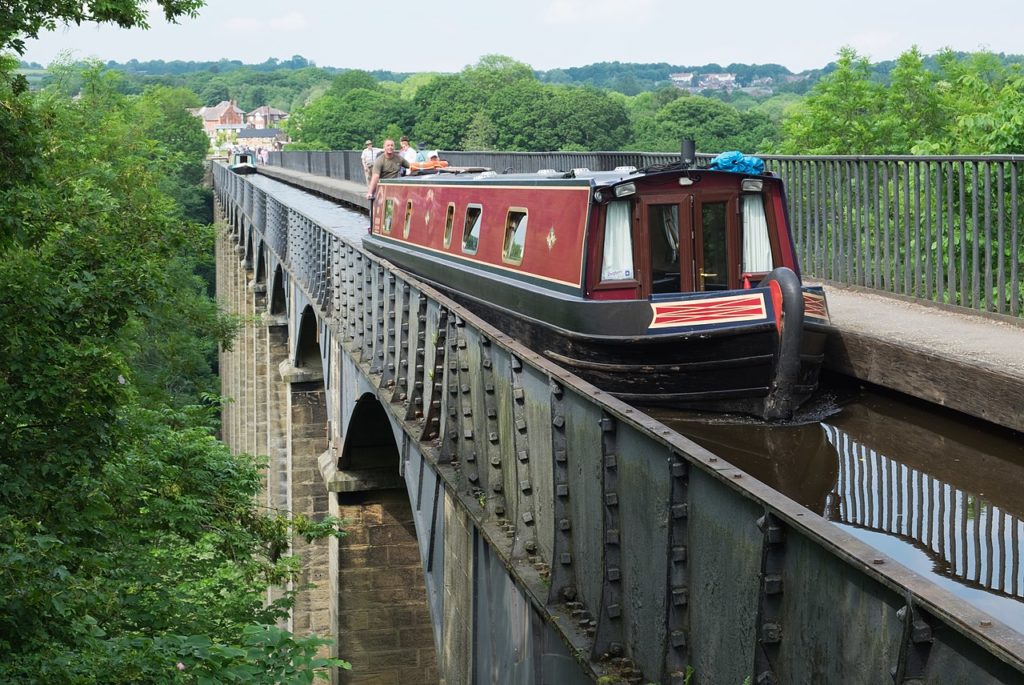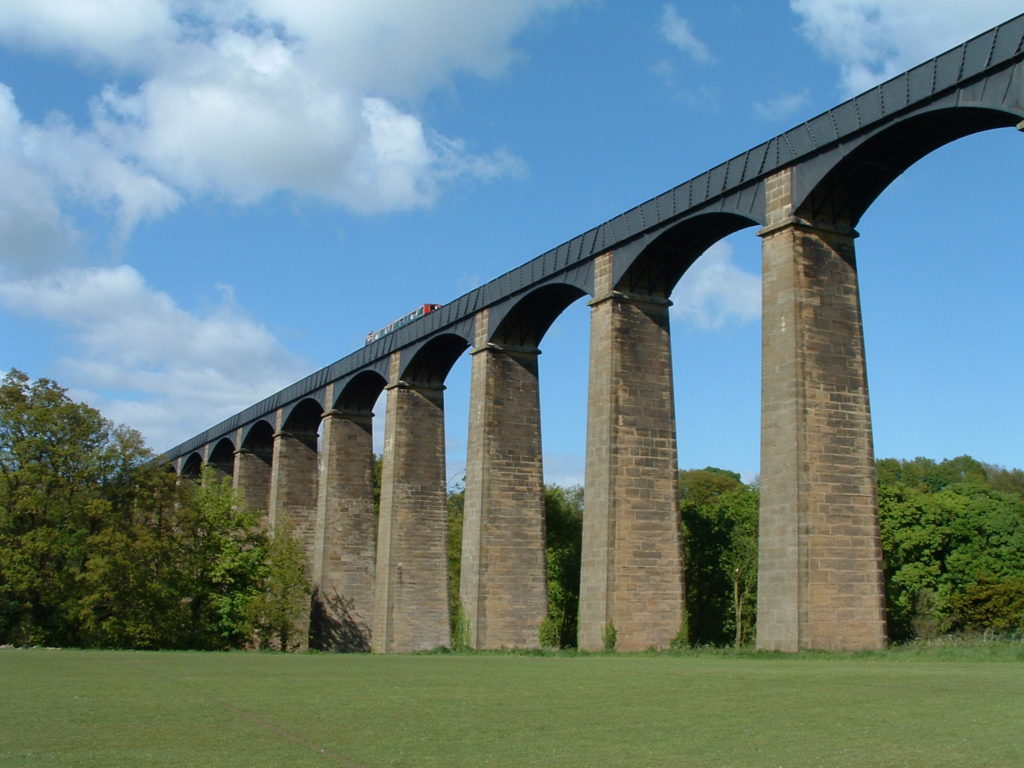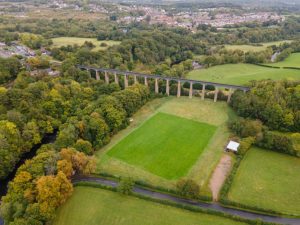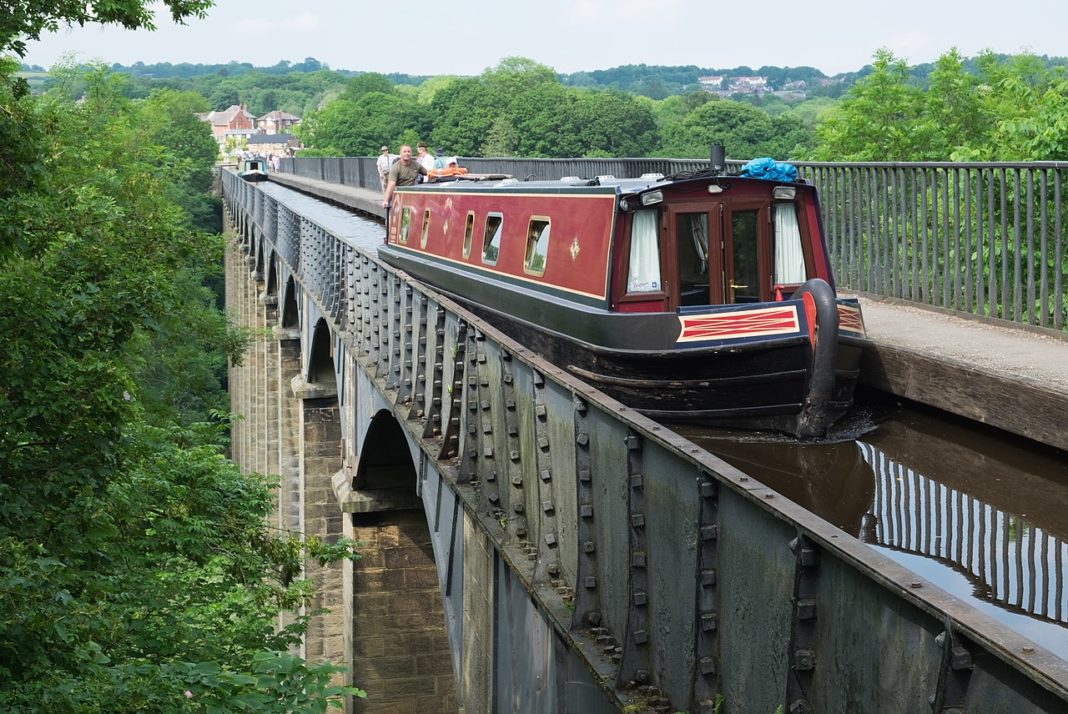The Pontcysyllte Aqueduct is a navigable aqueduct that carries the Llangollen Canal across the River Dee in the Vale of Llangollen in northeast Wales.
The 18-arched stone and cast iron structure is for use by narrowboats and was completed in 1805 having taken ten years to design and build. It is 3.7 meters wide and is the longest aqueduct in Great Britain and the highest canal aqueduct in the world. A footpath runs alongside the watercourse on one side.

The aqueduct was to have been a key part of the central section of the proposed Ellesmere Canal, an industrial waterway that would have created a commercial link between the River Severn at Shrewsbury and the Port of Liverpool on the River Mersey.
The mortar used lime, water, and ox blood. Blood and extracts of blood containing hemoglobin have been used in the construction and building industry since antiquity as air-entraining colloids to inexpensively strengthen mortar exposed to freeze-thaw temperature cycles.

Cast plates are laid transversely to form the bed of the canal trough. The trough is not fastened to the arches, but lugs are cast into the plates to fit over the rib arches to prevent movement. The aqueduct was left for six months with water inside to check that it was watertight. A feature of a canal aqueduct, in contrast with a road or railway viaduct, is that the vertical loading stresses are virtually constant. According to Archimedes’ principle, the mass (weight) of a boat and its cargo on the bridge pushes an equal mass of water off the bridge.
The towpath is mounted above the water, with the inner edge carried on cast-iron pillars in the trough. This arrangement allows the water displaced by the passage of a narrowboat to flow easily under the towpath and around the boat, enabling relatively free passage. Pedestrians, and the horses once used for towing, are protected from falling from the aqueduct by railings on the outside edge of the towpath, but the holes in the top flange of the other side of the trough, capable of mounting railings, were never used.

The aqueduct and surrounding lands were submitted to the “tentative list” of properties being considered for UNESCO World Heritage Site status in 1999. The aqueduct was suggested as a contender in 2005—its 200th anniversary year – and it was formally announced in 2006 that a larger proposal, covering a section of the canal from the aqueduct to Horseshoe Falls would be the United Kingdom’s 2008 nomination.
According to Wikipedia














